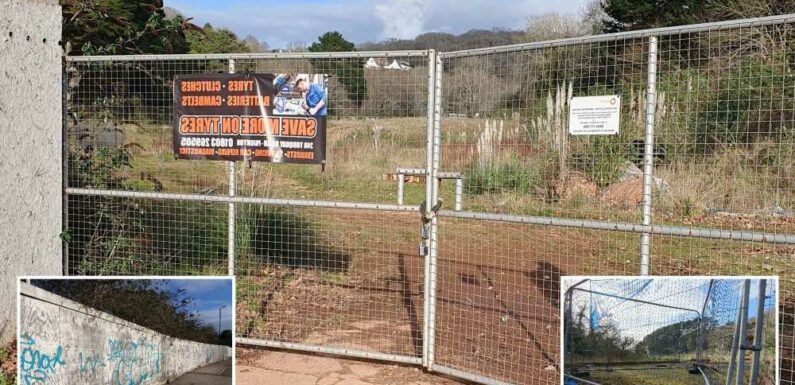
EERIE photos capture the derelict site known as the UK’s “Chernobyl-on-Sea” which is close to some of Britain’s most well-known beaches.
The site of the old gasworks at Hollicombe, Devon, has been abandoned for decades.
Even though planning permission was granted for nearly 200 homes to be built there as long ago as 2012, it has not been touched.
The area is one of a number of key “brownfield” sites marked for development in Torbay, where demand for land used for housing has reached critical levels.
The three-acre site is now overgrown and strewn with battered fence panels and other debris.
The wooden hoardings along the Paignton to Torquay road, opposite the entrance to Hollicombe Park and the path to the beach, are all cracked and peeling and covered in graffiti.
Read More on Devon
You can hire a Devon holiday home with a private beach bar from £83pp a night
How to have a cheap Devon holiday this summer – with activities for under £5
The leader of Torbay Council, Cllr Steve Darling, said the state of the hoardings was “terrible” and revealed he had written to the owners of the site, urging them to take action.
He also said he wanted them to move forward with developing the site, which was cleaned of toxic chemicals, including arsenic and cyanide in 2015.
It is estimated that when building does start, it will take three years to complete.
Cllr Darling said his letter to the site owners Vistry Partnership, the parent company of developers Linden Homes: “This is a significant arterial route between Torquay and Paignton and residents and visitors alike can only be horrified at the poor state of this boarding.
Most read in The Sun
Greenwood has attempted rape charge DROPPED over a year after star arrested
Cops seal off bench and divers scour river in search for missing mum
Huge shake up to football ownership leaked – what it means for your club
Molly-Mae’s best friend Maura Higgins hinted at Bambi baby name 18 months ago
“I would reiterate our desire to get them re-painted and smartened up as soon as possible.
“We remain very keen to see the approved development for this site commenced, or if revised, then an acceptable scheme brought forward as soon as possible.”
The first plans for the site were shown to the public in June 2017, at that point the gasworks had been dormant for nearly 40 years, Devon Live reports.
Local fought an unsuccessful campaign which called for the area to be turned into a park.
The now-defunct Midas Homes submitted a plan to build 185 new homes, which were a mix of one, two and three-bedroom apartment, with 44 earmarked as being affordable.
The plan though attracted more than 500 objections, largely on the grounds that it would increase traffic and a Hollicombe Action Group was formed to fight the plan.
'FULL DECONTAMINATION' NEEDED
Councillors heard that a “full decontamination” would be needed and one member of the planning committee called it Chernobyl-on-Sea.
In December 2010 councillors were recommending the go-ahead for 185 homes and a public park.
It was given the green light in February 2011, so long as giant “tent” was put over the site during digging to prevent toxic dust escaping into the air.
The government though then “called in” the whole project in April 2011 so an environmental impact assessment could be made.
A year later the plan was said to be “back on track” and locals were informed they had nothing to fear from the toxic chemicals left behind, which were removed under the giant marquee in 2015.
Read More on The Sun
Mum-of-nine says people always want to know how many baby daddies she has
How a twitching eye could be a sign of something serious – and when to see your GP
Since then though, the site has remained empty and no homes have been built.
Maps of the area show a road called Cudd Hill Road running through the site, although the road has never been built.
Source: Read Full Article













